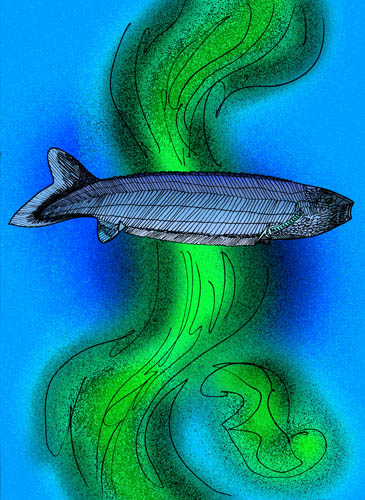Pharyngolepididae on:
[Wikipedia]
[Google]
[Amazon]
''Pharyngolepis'' is an extinct genus of primitive  ''Pharyngolepis'' had well-developed
''Pharyngolepis'' had well-developed
jawless fish
Agnatha (; ) or jawless fish is a paraphyletic infraphylum of animals in the subphylum Vertebrata of the phylum Chordata, characterized by the lack of jaws. The group consists of both extant taxon, living (Cyclostomi, cyclostomes such as hagfish ...
that lived in the Silurian
The Silurian ( ) is a geologic period and system spanning 23.5 million years from the end of the Ordovician Period, at million years ago ( Mya), to the beginning of the Devonian Period, Mya. The Silurian is the third and shortest period of t ...
period of what is now Norway
Norway, officially the Kingdom of Norway, is a Nordic countries, Nordic country located on the Scandinavian Peninsula in Northern Europe. The remote Arctic island of Jan Mayen and the archipelago of Svalbard also form part of the Kingdom of ...
.
 ''Pharyngolepis'' had well-developed
''Pharyngolepis'' had well-developed anal
Anal may refer to:
Related to the anus
*Related to the anus of animals:
** Anal fin, in fish anatomy
** Anal vein, in insect anatomy
** Anal scale, in reptile anatomy
*Related to the human anus:
** Anal sex, a type of sexual activity involving ...
and caudal fin
Fins are moving appendages protruding from the body of fish that interact with water to generate thrust and help the fish swim. Apart from the tail or caudal fin, fish fins have no direct connection with the back bone and are supported only ...
s, but no paired or dorsal fin
A dorsal fin is a fin on the back of most marine and freshwater vertebrates. Dorsal fins have evolved independently several times through convergent evolution adapting to marine environments, so the fins are not all homologous. They are found ...
s that would have helped stabilise it in the water, and so was probably a poor swimmer, remaining close to the sea bottom. The pectoral fin
Fins are moving appendages protruding from the body of fish that interact with water to generate thrust and help the fish aquatic locomotion, swim. Apart from the tail or caudal fin, fish fins have no direct connection with the vertebral column ...
s were instead replaced by bony spines, possibly for protection against predators, and there was a row of spines along the back. It probably scooped up food from the ocean floor.
References
Birkeniiformes Silurian fish of Europe Fossil taxa described in 1911 Birkeniiformes genera {{Paleo-jawless-fish-stub